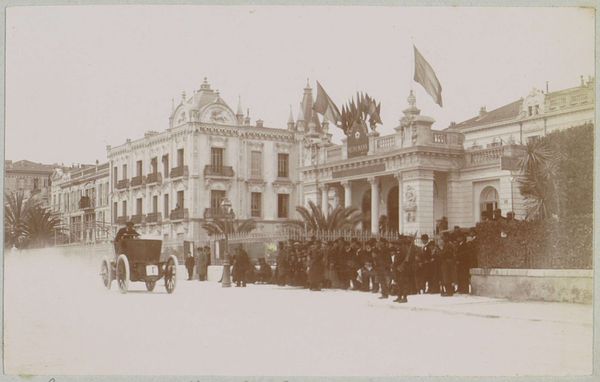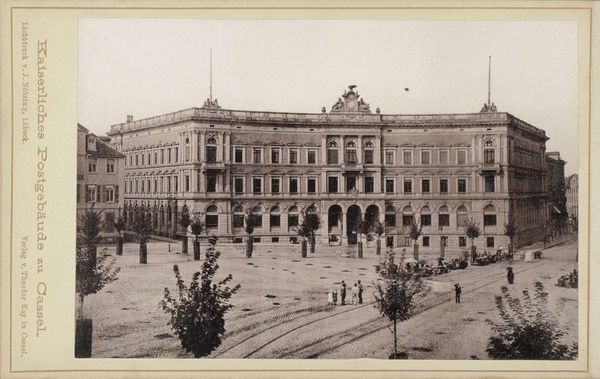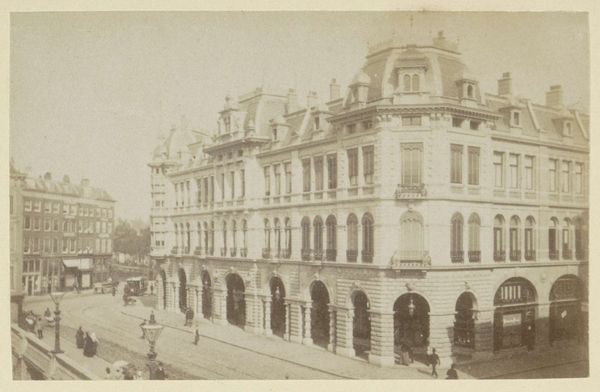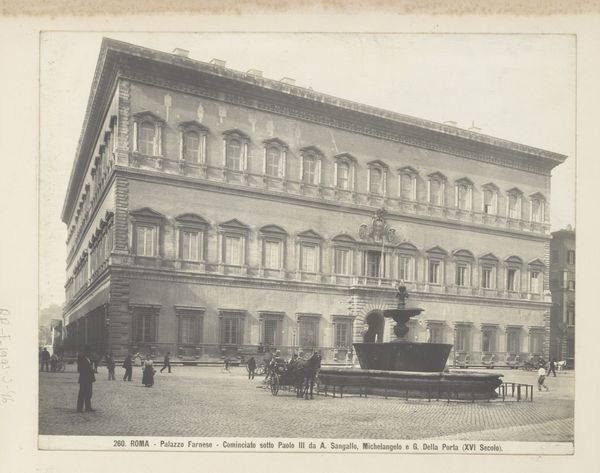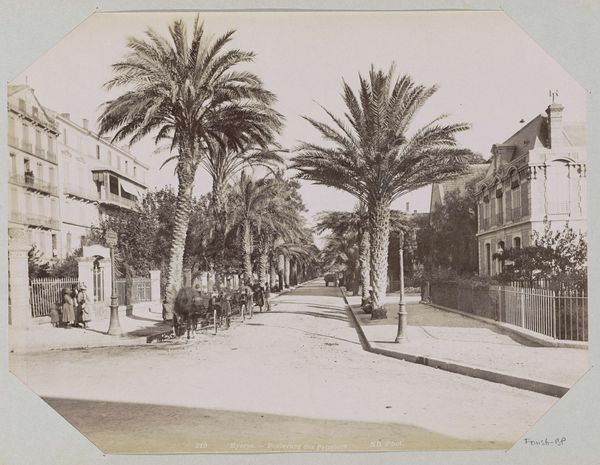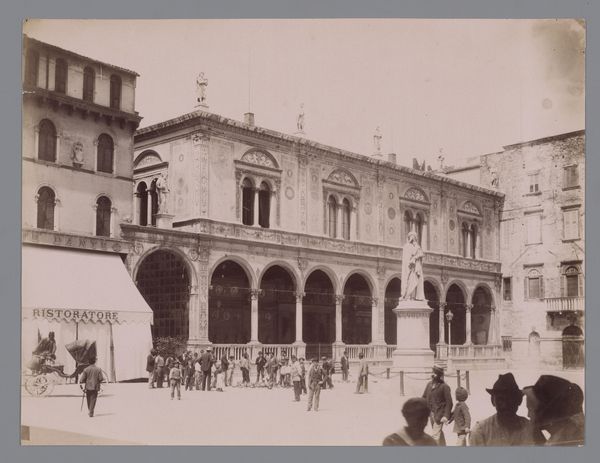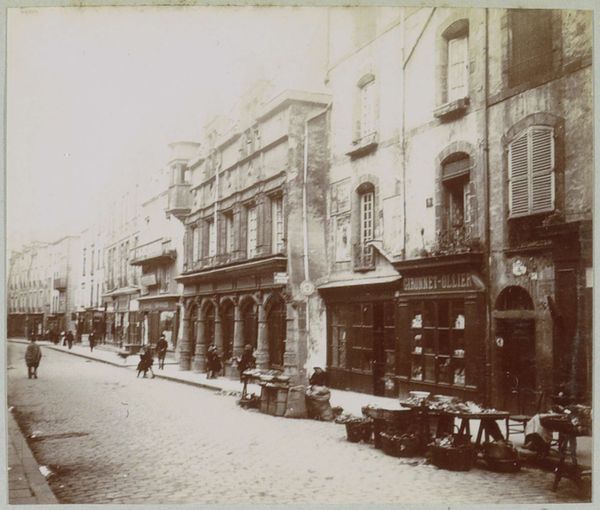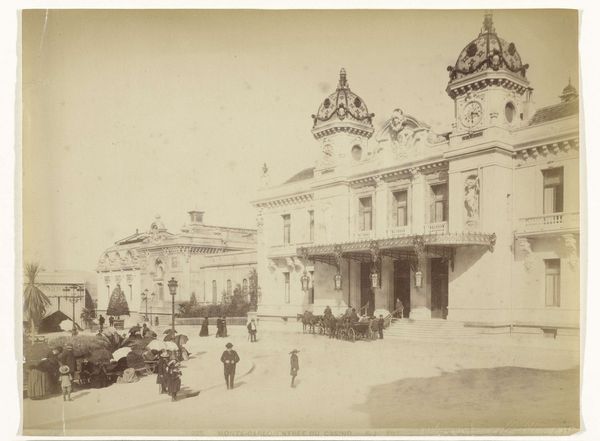
Autocoureur Lemaître, deelnemer aan de Course du Mille, een race voor automobielen in Nice Possibly 1899
0:00
0:00
photography
#
street-photography
#
photography
#
cityscape
Dimensions: height 66 mm, width 109 mm
Copyright: Rijks Museum: Open Domain
Curator: This is a photograph, believed to be from 1899, currently housed at the Rijksmuseum. The title rather precisely tells us that it is "Autocoureur Lemaître, deelnemer aan de Course du Mille, een race voor automobielen in Nice." Editor: What a moment captured! There’s something inherently thrilling in this monochrome stillness. You can almost feel the dust and smell the engine, though they would've used less refinement than now. Curator: Precisely! Consider the social implications here: early automobile races were spectacles reserved for the wealthy and technically literate, but also deeply linked to rapidly changing social values around work and the ownership of property, not only in the design and manufacture, but in creating spectacle for the elite. We see technology reinforcing existing social power structures while simultaneously disrupting older modes of living. Editor: I’m struck by the contrast between the machine and its backdrop. This elegant architecture seems from another era, especially in its juxtaposition against such industrial creation. Look closely, we see people assembled here. What of them? Were they mostly male, wealthy patrons or mechanically inclined workers? Their presence underscores the labor embedded in this event, beyond just the racer. Curator: This interplay reveals the anxieties and excitements of a world on the cusp of massive transformation, gender especially. It would be fascinating to deconstruct, gender wise, to analyze not only the social status of this photograph but what it implied for women, for the feminine sphere versus masculine control, in fin de siècle. Editor: From a material perspective, the photographic process itself adds another layer. The chemicals, the paper, the very act of freezing this fleeting moment with then-cutting edge technology becomes integral. It highlights the transformation not just in transport, but in how we document and perceive reality itself, making tangible something beyond itself. Curator: It's not just a depiction of speed. It reflects the material conditions allowing speed and, even, what we now understand of leisure. I would ask the questions about sustainability of fossil fuels too. This is how the early ideas of consumption arose and began to take form in contemporary imagination. Editor: Absolutely, a fascinating interplay of the ephemeral and the concrete. A glimpse into our evolving relationship with speed, labor, and image-making. Curator: Thank you. By reexamining this photographic process in the light of technology and gender, we better perceive these historical contexts.
Comments
No comments
Be the first to comment and join the conversation on the ultimate creative platform.
